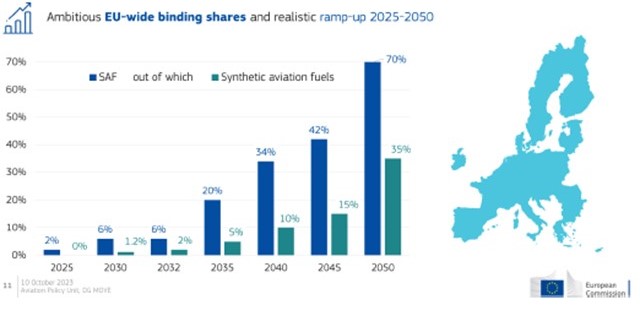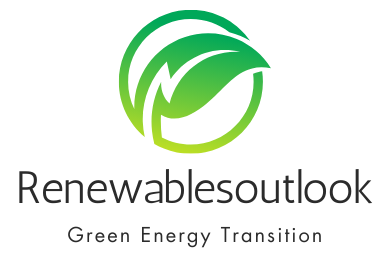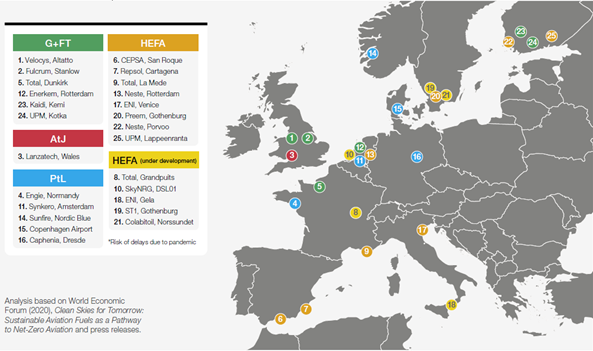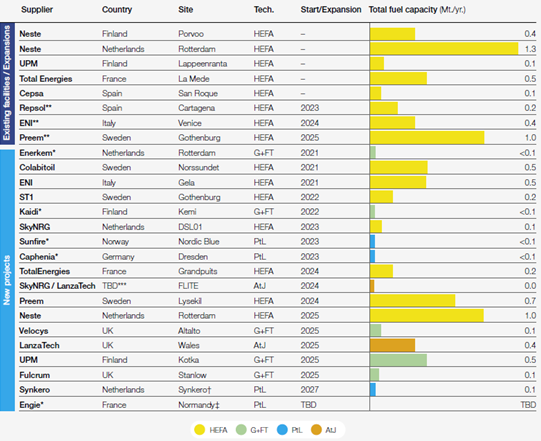Aviation generated about 14% of the transport emissions, making it second biggest source of greenhouse gas emissions in the transport sector (2nd after road transportation).
About 10.2 million flights were carried out in EU in 2023 (Eurocontrol European Aviation Overview) and intra-Europe flights causing 87 M tons CO2 emissions. One estimation is that jet fuel consumption in EU is approximately 1.38 million barrel per day.
So far, two different regulatory approaches to SAF (Sustainable Aviation Fuels): a supply side push as the case in USA through tax incentives to encourage SAF production. In the EU, it is mainly demand side push with ambitious targets. It is mix of both, in the case of the UK, however.
USA SAF Policy:
In early September 2021, the U.S. announced a new sustainable aviation fuel goal to increase the production of SAF to at least 3 billion gallons per year by 2030 (approx. 8.6 million tonnes), including:
- A proposed SAF tax credit that aims to cut cost and rapidly scale domestic production of SAF.
- Continuous funding opportunities to support SAF projects and fuel producers, with the launch of a new SAF Grand Challenge to ramp up domestic production of SAF.
- Closely working with international partners to support the global scale up and availability of SAF.
UK SAF Policy:
In UK, SAF mandate will start from 2025, from 2%of total UK fuel demand. The UK has set an even more ambitious target, aiming for a 10% SAF blend by 2030 and then at 22% in 2040. A separate obligation on power to liquid fuels from 2028 that reaches 3.5% of total fuel demand in 2040.
EU SAF Policy:
ReFuelEU Aviation promotes the increased use of sustainable aviation fuels (SAF) as the single most powerful tool to decrease aviation CO2 emissions. The measure is part of the Fit for 55 package. It sets requirements for aviation fuel suppliers to gradually increase the share of SAF blended into the conventional aviation fuel supplied at EU airports.
Sustainable aviation fuels (SAF) means aviation fuels that are either:
- synthetic aviation fuels;
- aviation biofuels; or
- recycled carbon aviation fuels;
Green Hydrogen based fuels are included inside the synthetic aviation fuels, with making another business case of Green Hydrogen. For PtL fuels, electricity used to produce the green hydrogen or e-fuels must comply with the additionality, geographically and temporal correlation criteria (for both EU and UK).
Starting from 2025, EU airports and fuel suppliers are obliged that atleast 2% if aviation fuel is Green. The blend percentage will increase and by 2050 atleast 70% of aviation fuel need to be SAF. The graph shows a progressive and ambition targets.

EU SAF Landscape:
The SAF industry is still in development phase. As of 2020, the European Union’s supply of SAF was less than 0.05% of the total jet fuel demand.
SAF production can feasibly ramp up to 10% of total European jet fuel consumption by 2030 (about~6.5 Mt/year). Germany is focussing on PtL fuels as part of its National Hydrogen Strategy with an objective to ramp up production to 200 thousand tonnes by 2030.
Below is list of announced projects in Europe with SAF production capacity (2020-2025). There are currently at least eight existing facilities and around 20 new plants or expansions at existing sites being planned (five of these are currently pilot and demonstration facilities), with the ability to jointly produce a theoretical maximum of approximately 3 million tonnes (Mt) of SAF per year.
Summary:
Regulatory Mandates: Various countries and regions have introduced SAF blending mandates. For example, the EU’s ReFuelEU Aviation initiative requires fuel suppliers to blend 2% SAF by 2025, 5% by 2030, and 63% by 2050.
Corporate Commitments: Corporate targets have also been announced by European airlines. For instance, the International Airlines Group (IAG) and Ryanair have committed to use 10% and 12.5% SAF by 2030 respectively.
At global level, Airlines for America (A4A), an association of major US airlines, pledged in March 2021 to facilitate making around 6 million tonnes of SAF commercially available in the US by 2030.
Incentives and Support: Governments are providing incentives to accelerate SAF production and adoption. This includes financial support, tax incentives, and research and development funding. Insentive schemes mandated in UK and tax incentives in USA.
SAF Eligibility Criteria: To ensure that SAF meet robust sustainability criteria, Sustainability Certification Schemes (SCS) control compliance of economic operators with the sustainability requirements along the SAF supply chain on a lifecycle basis. This certificate puts the economic operator in the position to produce SAF from certified feedstock in accordance with the relevant sustainability requirements (e.g. RED, CORSIA).


